Text
Arreda homem, que aí vem mulher 🌹
Tiktok 💃🏻 im trying lul.
#artists on tumblr#black art#orishas#umbanda#candomblé#orixás#support black people#support black creators#support black business#black tumblr#pombagira#mojuba#arreda homem#Yemaya#oshun#shango#candomble
26 notes
·
View notes
Text

Esperança. substantivo feminino. Virtude que completa as três virtudes teologais (fé, caridade e esperança).
A minha espiritualidade sempre se dedicou a me ensinar a ter um tanto de esperança. Ainda segundo o dicionário, esperança "é sinônimo de: confiança, espera, expectativa, perspectiva, fé, possibilidade, probabilidade, ilusão, fantasia, sonho, aguardo".
Gosto de todas as palavras atribuídas. Oxum me ensina a sonhar com a fantasia, de tal forma que Iemanjá me mostra a expectativa, a fé, me ensina a aguardar, mesmo dentro de alguma agitação. Oxumaré, por sua vez, sempre traz a possibilidade. Mostra que a probabilidade é maior que a ilusão.
Brinquei com as palavras, da mesma forma que brinquei com a arte, mas falo com seriedade. O que aprendo com a minha espiritualidade é maior do que qualquer inferno, ao qual todos nós estamos suscetíveis a viver.
Acredite no seu Orixá.
🤍
24 notes
·
View notes
Text

Iemanjá (also spelled Yemayá. Yemoja, Iemoja, or Yemaya) is one of the most powerful orishas. She is the mother of all living things, rules over motherhood and owns all the waters of the Earth. She gave birth to the stars, the moon, the sun and most of the orishas. Yemaya makes her residence in life-giving portion of the ocean (although some of her roads can be found in lagoons or lakes in the forest). Yemaya’s aché is nurturing, protective and fruitful. Yemaya is just as much a loving mother orisha as she is a fierce warrior that kills anyone who threatens her children.
Yemaya can be found in all the waters of the world, and because of this she has many aspects of “caminos” (roads), each reflecting the nature of different bodies of water. She, like Oshún, carries all of the experiences of womanhood within her caminos. Contrary to popular belief she is not just a loving mother. Some of Yemaya’s caminos are fierce warriors who fight with sabers or machetes and bathe in the blood of fallen enemies. Other roads are masterful diviners that have been through marriage, divorce and back again. Some roads of Yemaya have been rape survivors, while other roads betrayed her sisters out of jealousy and spite. No matter what camino of Yemaya, all are powerful female orishas and fiercely protective mothers.
Yemaya has a very special relationship with two orishas in particular: Oshún and Chango. Oshún is often depicted as Yemaya’s sister, and Yemaya allows Oshún to take residence in her rivers. Yemaya and Oshun relate to one another like typical sisters; they love each other and also have a bit of sibling rivalry. Chango and Yemaya are inseparable. Some followers of Santeria say Yemaya is Chango’s mother. The two of them eat together and Chango shares his wealth with Yemaya. Yemaya helped mold Chango into the wise leader he was meant to be from birth (although he initially lacked the skill to rule with grace).
You can find me at: Instagram / Pinterest / Marketplace
#Iemanjá#iemanja#yemayá#yemanjá#umbanda#candomblé#santeria#artists on tumblr#black art#black tumblr#orishas#orixás#shango#xangô#oxum#osun#osùn#support black creators#support black business#support black people#odoyá#encontro ancestral
183 notes
·
View notes
Text
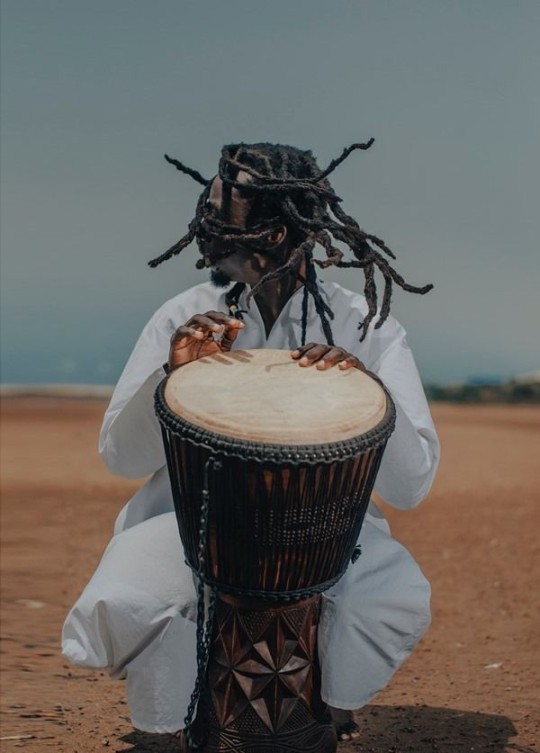

Music is very important for contact with the Orixás. I speak more about the rhythm and power of the atabaque (musical instrument) than about the music itself. We have a playlist with some "sung points" (which in short, are the songs to the deities). The sound is very different for those who are not Brazilian or even of the religion.
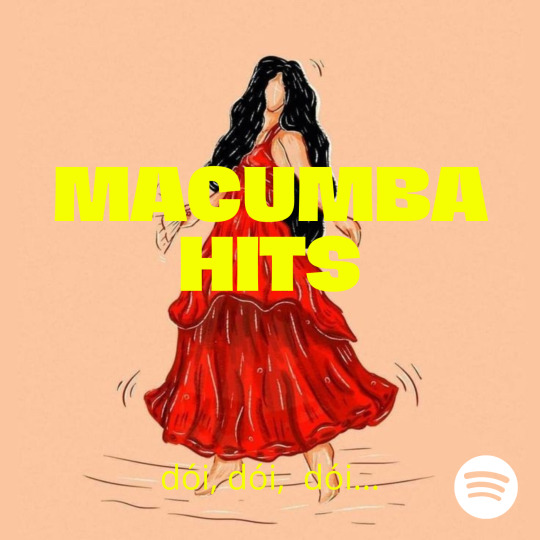
Try a little bit: macumba hits
#artists on tumblr#black art#black tumblr#orishas#umbanda#candomblé#orixás#oxala#shango#exu#oshun#yemanjá#yemaya#oxum#oshunmare#ogum#laroyê#pombagira#support black business#support black creators#support black people
66 notes
·
View notes
Text

You don't step on me twice
You can't step into the same water twice
Remember?
the water follows
And me too
Ora YêYê, Oxum. Odoyá, Yemanja. It's just love. Have mercy on us.
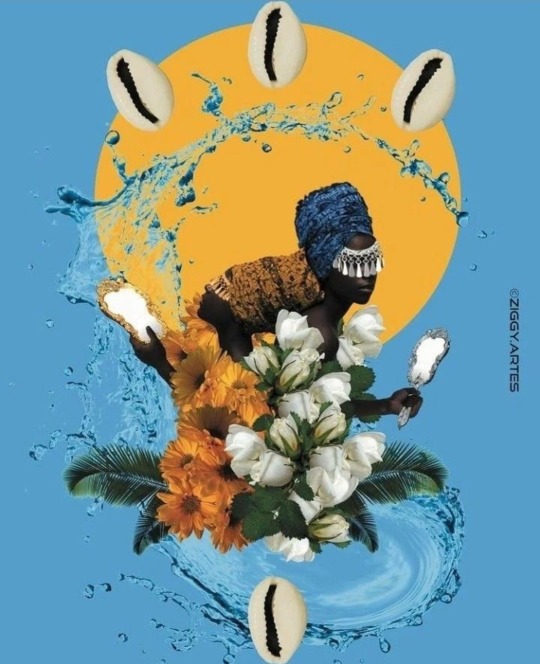
#artists on tumblr#black art#black tumblr#orishas#support black business#support black creators#umbanda#candomblé#orixás#yemayá#yemaya#iemanjá#yemanjá#oshun#oshunenergy#oxum#loja de umbanda#encontro ancestral
356 notes
·
View notes
Text
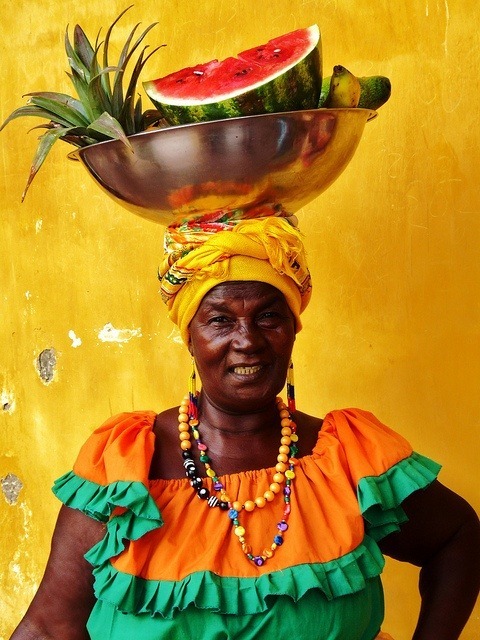

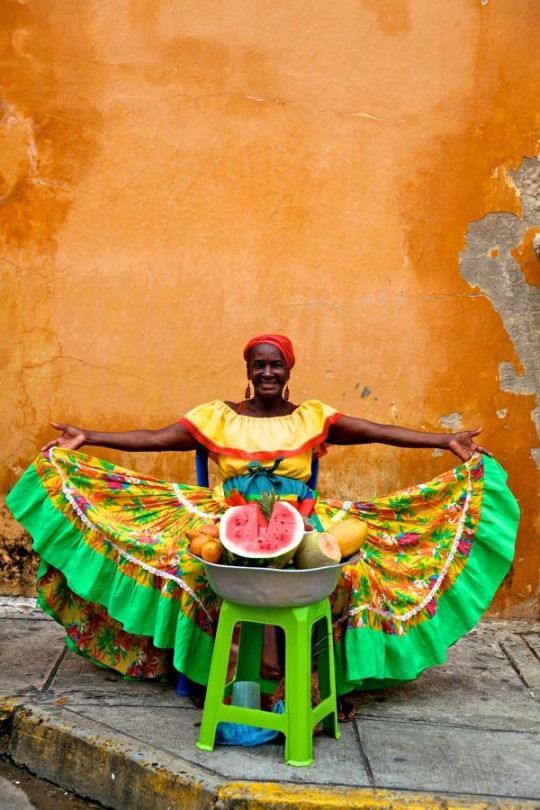


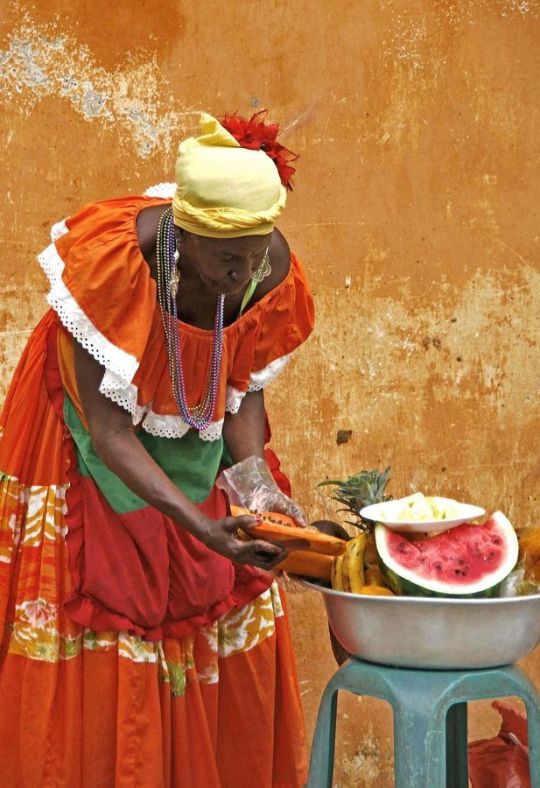

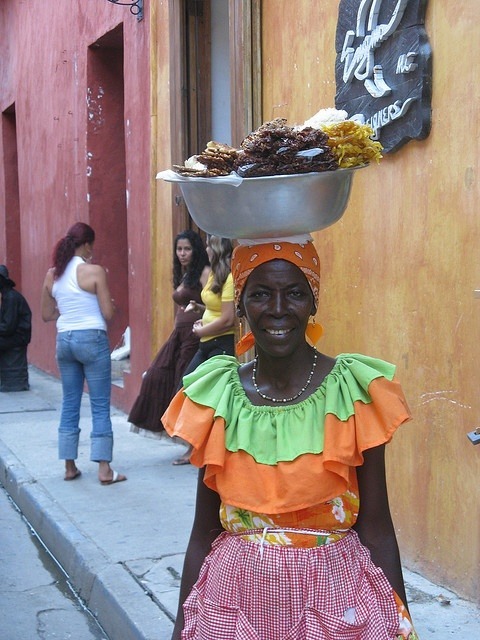
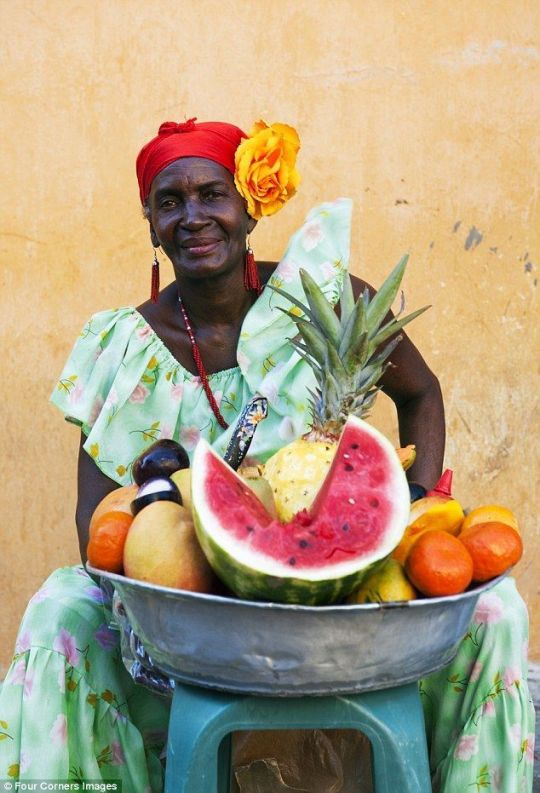

932 notes
·
View notes
Text
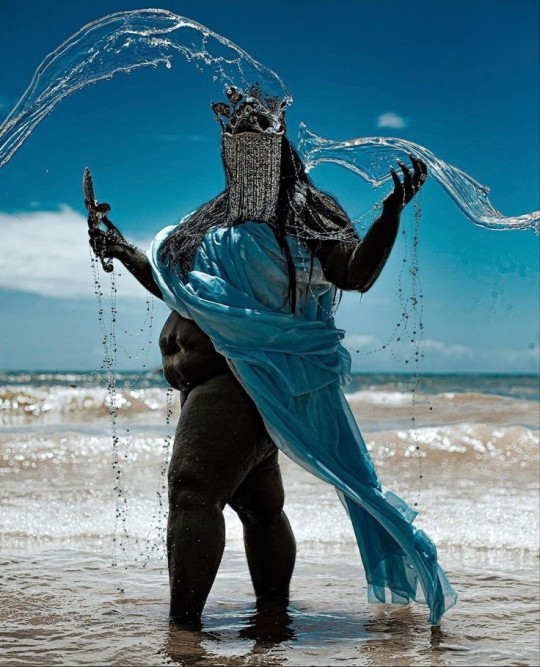
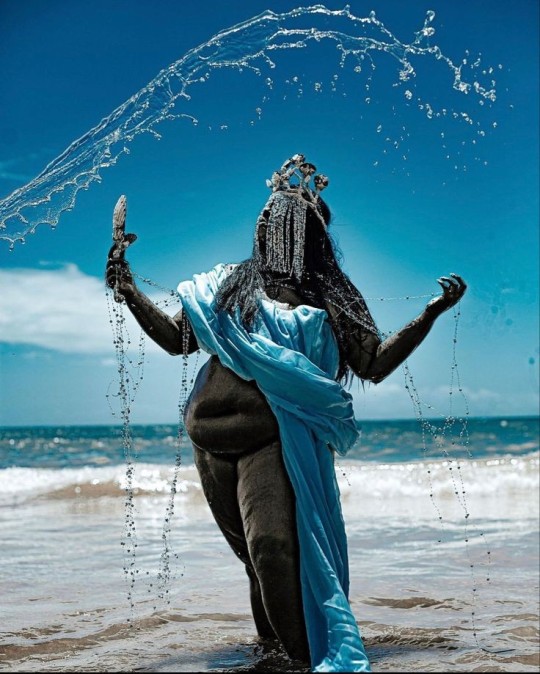
A very powerful and intelligent way of representing Yemanja. We learn very early on from the mythology of the Greek gods true "designed" bodies.
I also see it as an anti-fatphobia fight, since, yes, this fat black woman is a beautiful mermaid.
#artists on tumblr#black art#black tumblr#support black business#support black creators#support black people#candomblé#orishas#orixás#umbanda#iemanjá#anti fatphobia#yemaya#yemoja#support if you can#support black artists
177 notes
·
View notes
Text

Every year, across the country, Brazilians of all faiths gather to celebrate the Candomblé goddess of the sea, Iemanjá. In Salvador, in particular, the festivities are spectacular and draw large crowds, as well as being shown on TV. Read on to get an idea of when and why this goddess is worshipped and how you can get involved.
What Is the Festival?
The festival of Iemanjá (sometimes spelt Yemanjá) takes place in many places all over Brazil. The biggest celebration of it takes place in the Rio Vermelho neighbourhood in Salvador on February 2 every year. During the festivities, followers of the Candomblé religion offer flowers and gifts to their goddess Iemanjá at the sea’s edge and send them out to her in the ocean. Everyone dresses in white, and night-long music and dancing continue after the offerings have been made.
Iemanjá, goddess (or orixá) of the sea, is a central deity in the Candomblé religion. She watches over sailors and fishermen and controls their catches. She is very powerful, and is concerned with every aspect of womanhood, fertility and family; she is also the protector of children. She often is depicted as a mermaid and is always dressed in either white or blue.

#artists on tumblr#black art#black tumblr#support black business#support black creators#support black people#candomblé#orishas#orixás#umbanda#iemanja#yemoja#yemaya#yemayá#festa de iemanjá#oshun#shango#ogum#oxala#Oxóssi#support black artists#support if you can
72 notes
·
View notes
Text
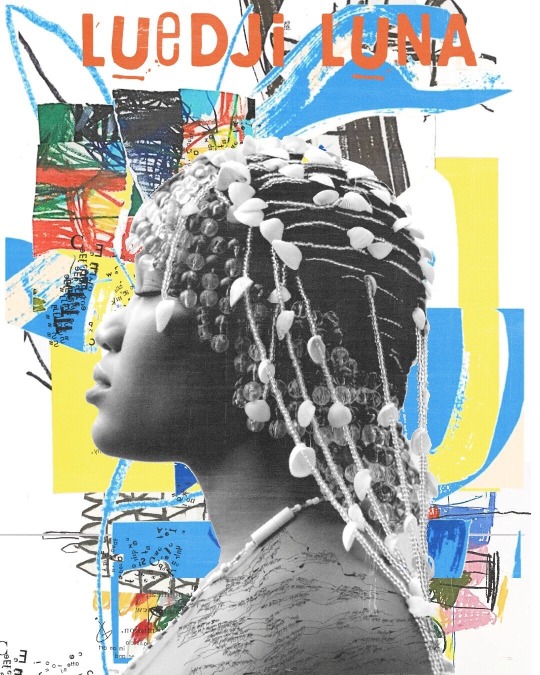

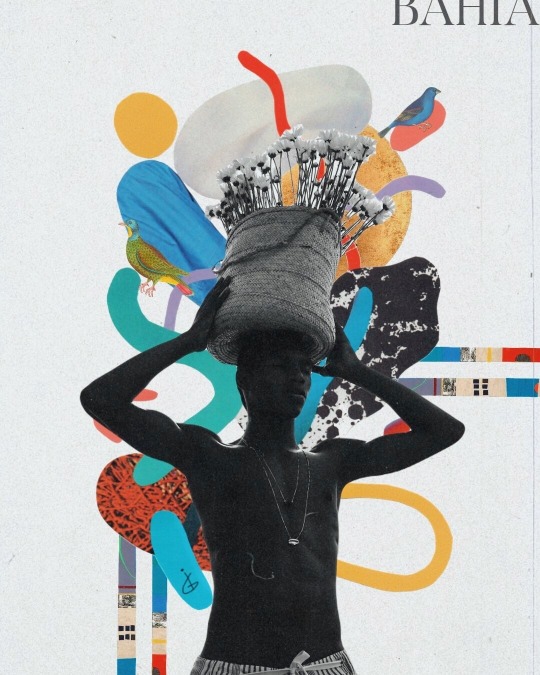
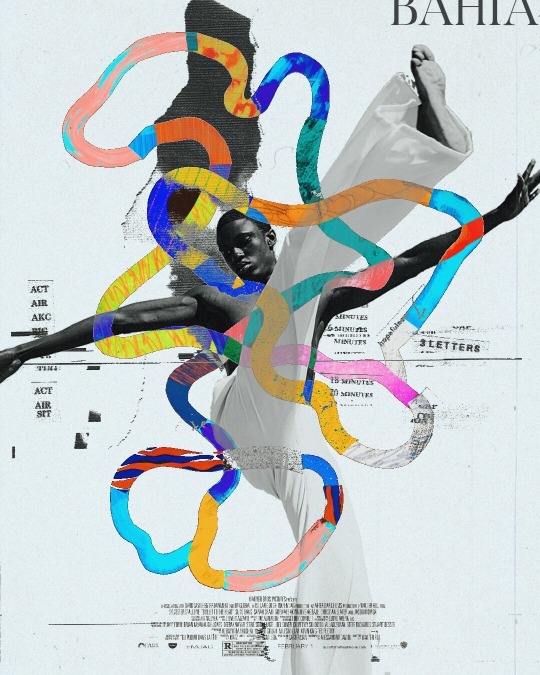
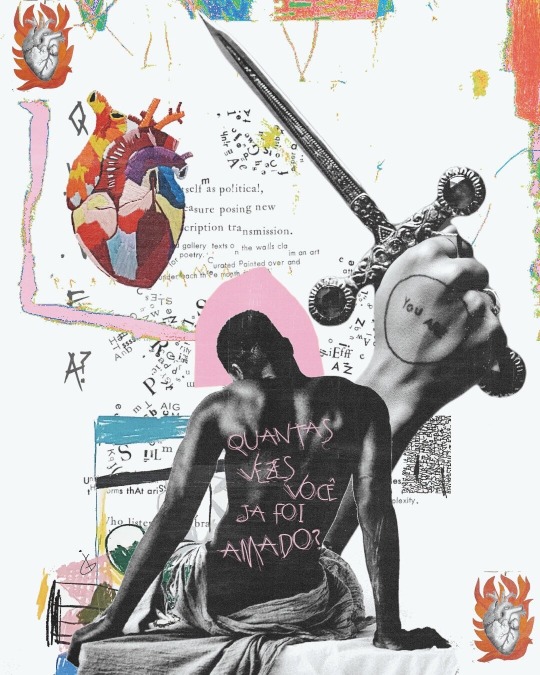
An independent artist, from Bahia, here in Brazil. Like me. I fell in love with his work, completely. It portrays everything I love. And when he chose to portray Bahia, he did it beautifully. ♡ Thanks @astronautademarmore1 🩷✨️
#artists on tumblr#bahia#brasil#collage#collage art#artwork#brazilian artists#luedji luna#baco exu do blues
117 notes
·
View notes
Text

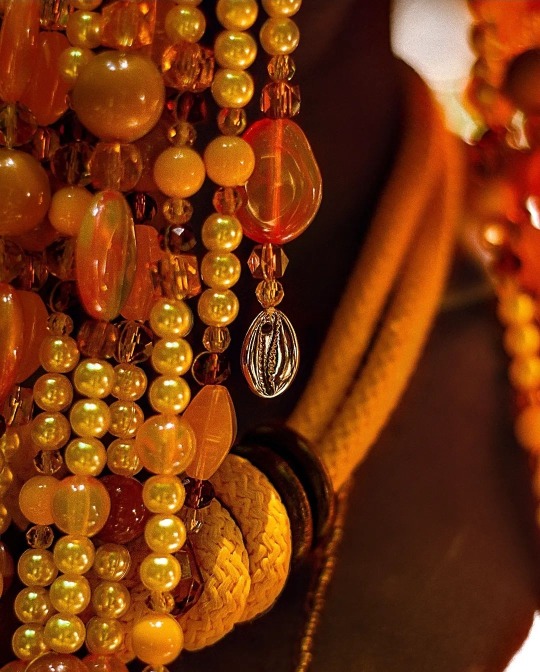
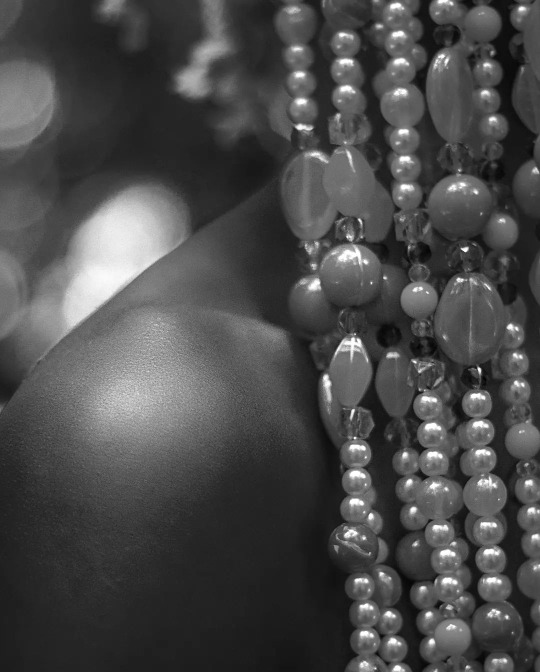
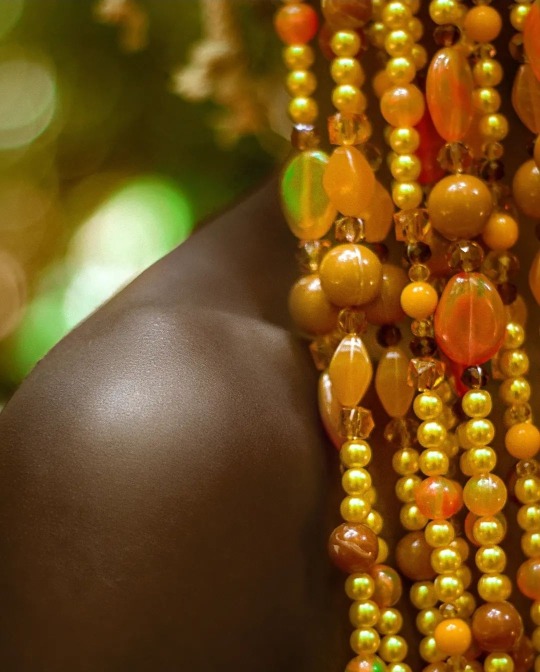
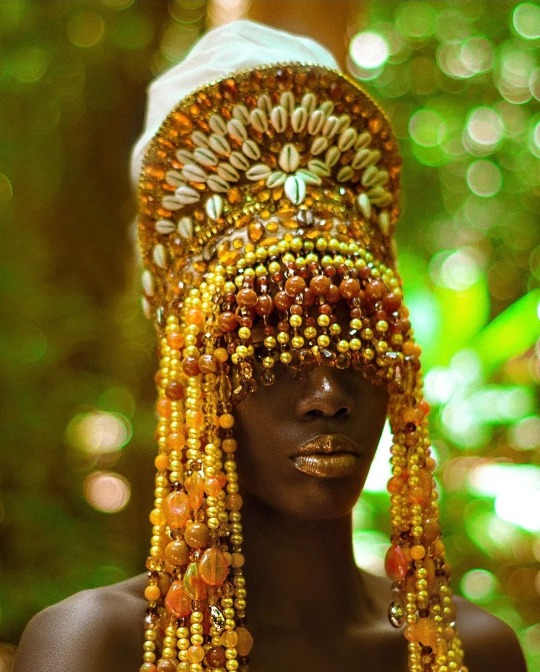


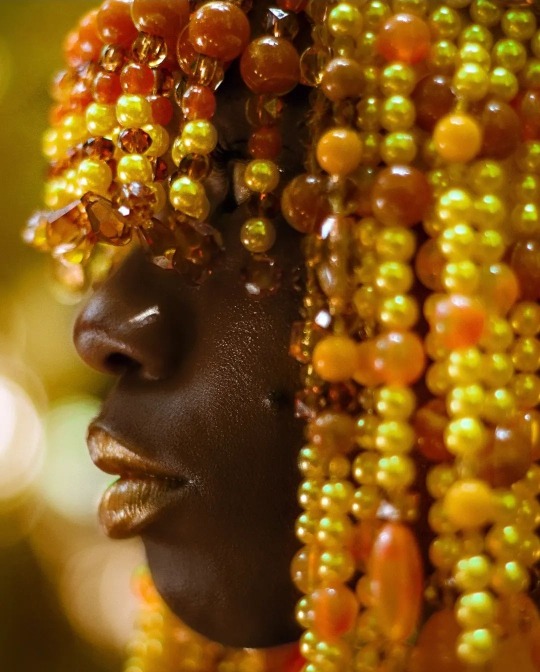

#oshun#oshungoddess#oshunenergy#oxum#orixá#orishas#orisha#bahia#umbanda#candomble#brasil#arte afro#black is beautiful#black is powerful#blacklivesmatter
145 notes
·
View notes
Text
Does this art remind you of which of the Orixás we've already talked about?

Fine art from @senegambia81 (instagram)
#artists on tumblr#black art#black tumblr#support black business#support black creators#support black people#candomblé#orishas#orixás#umbanda#oshun#shango#xangô#oyá#oxalá#yemoja#iemanjá#odoyá#support black artists#support#support my catarase#catarse me#black history matters#black history
39 notes
·
View notes
Text
Iansã/Oyá:
Iansã is one of the strongest and most important female Orixás in African mythology. She is considered the goddess of winds, storms and fire, representing strength and change. It is usually associated with the color red or brown, which symbolize strength and power.
In African mythology, Iansã is the wife of Xangô and is known for her courage and bravery. She is a warrior and protector Orisha, capable of bringing positive changes in her children's lives. It is a symbol of transformation, renewal and courage to face life's challenges.
Iansã is worshiped in several regions of Brazil, especially in Bahia. It is common to offer offerings such as candles, flowers, perfumes and swords to the goddess. It is believed that Iansã is capable of bringing protection, strength and courage to those who seek it.
The importance of Iansã in Afro-Brazilian culture is undeniable, being a symbol of strength, change and courage to face life's challenges.

#oyá#epahey#eparrei#iansã#ori#orixá#orishas#umbanda#artists on tumblr#black art#black tumblr#support black business#support black creators#support black people#support if you can#catarse me#support black artists#support my catarase
231 notes
·
View notes
Text
Hey guys, need to know something
#artists on tumblr#black art#black tumblr#support black business#support black creators#candomblé#orishas#orixás#umbanda#oshun#yemoja#shango#xangô#oxalá#osala#oshunmare#oxumaré#iemanjá#iyalorixá#oyá#nana buruque#omolú#oxaguian#oxóssi#oxum#olorun#Spotify
12 notes
·
View notes
Text
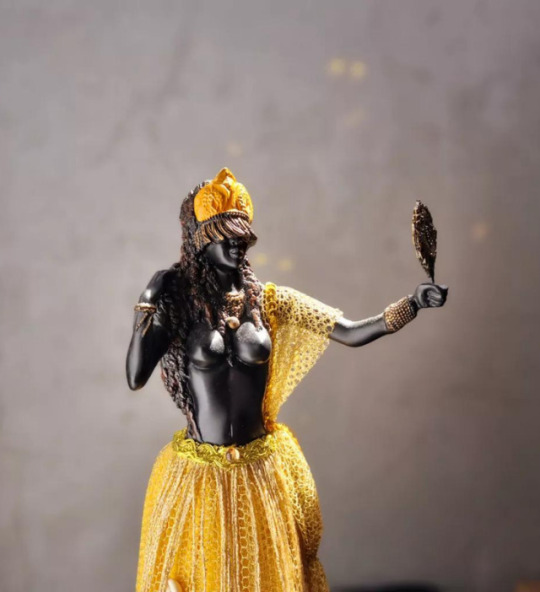

Oxum is one of the most important and popular female Orixás in African mythology. She is the goddess of rivers, waterfalls and fertility, representing the sweetness and delicacy of the waters. It is usually associated with the color yellow, which symbolizes gold, wealth and abundance. In African mythology, Oxum is the daughter of Oxalá and Yemanjá , and is considered the mother of all saints' children.
She is a maternal, affectionate and vain Orisha, who is concerned with beauty and harmony in her life and that of her children. Oxum is worshiped in several regions of Brazil, especially in Bahia. It is common to offer offerings such as flowers, mirrors, perfumes, honey and copper objects to the goddess. It is believed that Oxum is capable of bringing love, prosperity and fertility to those who seek it.
The importance of Oxum in Afro-Brazilian culture is undeniable, being a symbol of femininity, beauty and prosperity
#artists on tumblr#black art#black tumblr#umbanda#candomblé#orishas#orixás#support black business#support black creators#support black people#any donation helps#donatetoday#catarse#support my catarse#catarse me#support if you can#support black artists#orixas#oshun#oshunenergy#oshungoddess#oxum#ora yeye o
76 notes
·
View notes
Text
Hey guys. Unfortunately my computer stopped working. I've done everything I can, but there's nothing I can do.
So I REALLY need your support. In this link you can help me buy my main work tool.
Any amount will help. You can click translate the page at the time of payment, to your source language.
Reblog if you can. I really need help.
#artists on tumblr#black art#black tumblr#support black business#support black creators#support black people#support if you can#sims 4 cas#support black artists#support#any donation helps#support artists#support art workers#catarse#donate if you can#donations#donatetoday#help if you can#black artists on tumblr#black excellence#black history#black artist#black
20 notes
·
View notes
Text

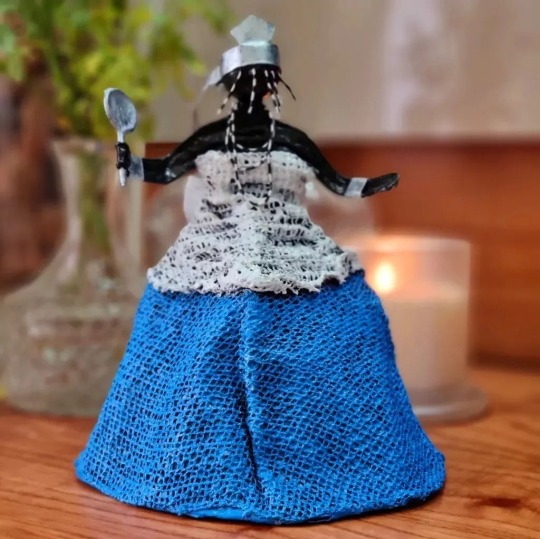


Nosso Ateliê é bem comprometido com a produção das nossas peças. Todo o processo da embalagem também já existe a implicação do Axé. Escutei isso várias vezes de clientes, e falo isso com orgulho, porque é satisfatório entregar o meu melhor, afinal trata-se do seu contato com o seu Poder Superior.
Essas peças são confeccionadas em arame, jornal/papel reciclado, tintura e banho de cola. O banho de cola torna ela uma escultura, além de garantir a durabilidade. São nossos Orixás da Bahia! ✨️
Todas as peças anunciadas têm 20 cm, não produzimos menores, mas se for necessário maior que isso nos chame no WhatsApp antes.
Aproveita os descontos do site (link na bio). Compartilhe Axé! 🌹
REBLOGA SE VOCÊ GOSTOU.
REBLOG IF YOU LIKE! 🌹
#umbanda#artists on tumblr#black art#black tumblr#candomblé#orishas#orixás#espiritualidade#orisha#orixas#oshun#oxum#Odoyá#Iemanjá#iansã#epahey#oyá#yemoja#support if you can#support black people#support black artists#support black creators#arte afro#support black business#tips#donate if you can#donate#paypal#support anti-racism#encontro ancestral
92 notes
·
View notes
Text
Iemanjá is one of the best known and worshiped female Orixás in Brazil. She is the goddess of the seas and oceans, representing the strength and beauty of the waters. It is usually associated with the color blue, which symbolizes tranquility, wisdom and serenity. In African mythology, Iemanjá is the daughter of Olokun, the god of the depths of the sea, and is considered the mother of all Orixás. She is a maternal, protective and affectionate Orisha , who is concerned with the well-being and safety of her children.

Iemanjá is worshiped in several regions of Brazil, especially in coastal regions. It is common to offer offerings such as white flowers, perfumes, fruits and objects such as mirrors and combs to the goddess. It is believed that Iemanjá is capable of purifying and bringing emotional balance to those who seek it. The importance of Iemanjá in Brazilian culture is undeniable, being one of the main representatives of Afro-Brazilian culture and a symbol of the union between different religions and cultures.
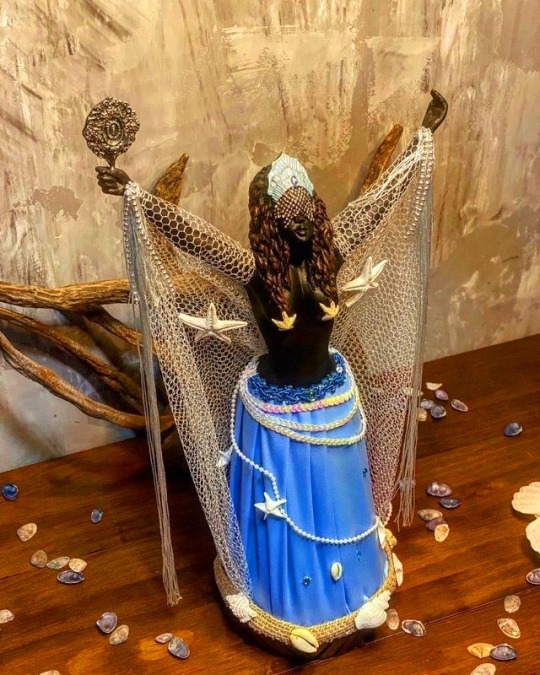
#artists on tumblr#black art#black tumblr#candomblé#orishas#orixás#orisha#orixas#yemoja#yemanja#iemanjá#iemanja#festa de iemanjá#02 de fevereiro#black history#black history matters#support black creators#support if you can#support black people#support black artists#support black business#tip jar#tips#donate if you can#donatetoday#gratifying#instant folllow back#follow back#black people
126 notes
·
View notes